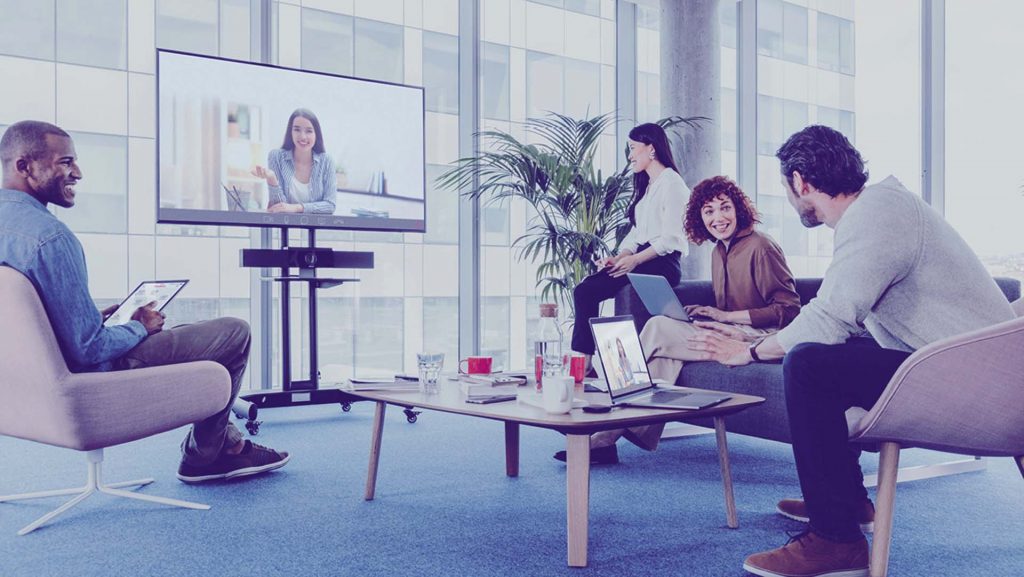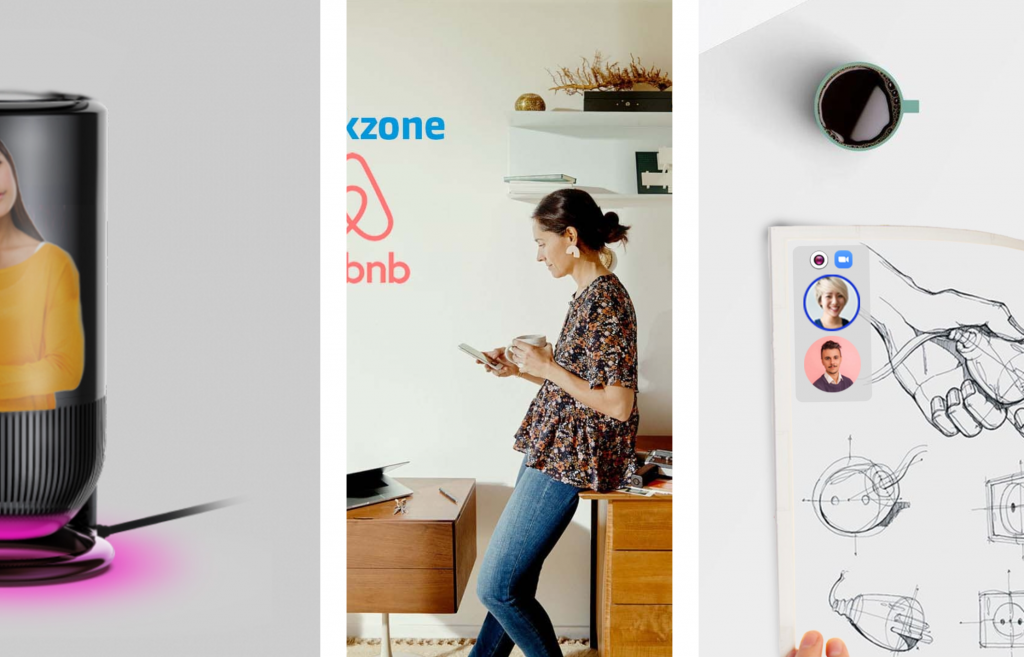HP – UX Design & Strategy – Hybrid Working (fully remote project)
________
UX DESIGN LEAD
________
While the shift to hybrid has given people freedom to work from virtually anywhere, the way people work together, both in and out of the office, is evolving. 80%* of executives are changing office spaces to focus more on collaboration. Hybrid work is about more than working remotely. With most companies investing in ways to upgrade conference rooms, the office is shifting from a place where people go to work to a place where people gather to work together. IT teams are also challenged with keeping people connected with productive and secure technology, making conferencing and collaboration solutions a top priority for 67%* of IT departments.
Design Thinking
In September 2021, I joined the project team working with HP to create an improved user experience on the complex hybrid work universe we are living post-COVID pandemic using Design Thinking techniques. During this 12 weeks discovery project, we worked to de-risk assumptions, prioritising, testing and learning about the key assumptions from the future customers – so we can inform the design and build of software, hardware, spaces and employee wellness and productivity metrics solutions.
90+ hours of customer insight conversations
Multiple moderated and unmoderated research pieces 12x clickable prototypes and mockups
Multiple online workshop facilitation sessions with stakeholders
Informed offer design (learnings + implications on experimentation and offer design)
Working with agility
When designing workplaces that enable anytime, anywhere work and collaboration, we wanted to test assumptions under in-flight propositions (e.g. desk booking solutions), starting with a good amount of insights (i.e. hot desks and hoteling are here to stay, desk time can be collaborative work, booking desires include the experience). We tested the proposition using a design thinking-led process, creating a survey and showing a booking experience prototype to users. This was tested with 36 users, between leaders and hybrid workers and a list of insights was created. We facilitated workshops with stakeholders to define design principles, design criteria and requirements prioritisation. The iterate and test process was repeated a few times during the sprints.
Testing to inform proposition
We also ran A/B tests to measure impact on desirability on a productivity metrics product and discovered that the tool should change positioning to give people balance and control over their time, instead of purely productivity and optimisation data. This research revealed the need to ask the user for permission to use their data, to respect their privacy and to give them a personalised experience. With this insights in mind, an onboarding journey containing a very different and human approach mixed with gaming strategies was created to be tested next.
Blue Sky Thinking
We also looked at creating some new concepts, using insights to develop and test new “blue sky” propositions that utilise existing HP capabilities.
The 12 weeks of discovery gave us mountain of insights into the pain points, needs, and hopes for the future of work – for everyday people like you and I. Whilst the initial brief for this team was to focus on testing assumptions under exisiting HP propositions, we couldn’t help ourselves in asking — what else could we do? All the assumptions, insights and findings to date have led to some early blue sky concepts we’ve iterated and are work in progress.
More about the process
User stories were created to represent “a day in a life of…”, setting the scene and describing the user needs, pain points and creating empathy with the user base during the tests, but also with the stakeholders during the project demos.
Prototypes including hardware, software, work places solutions and hybrid working experiences were created and put in front of people for a first reaction / quick user testing results. This research showed a lot of excitement for the possibilities that they could open up on a day-to-day basis.
The next steps:
- Create and test different and detailed use cases for each, to understand desirability
- Research the market for proof points and potential acquisitions or partnership opportunities
- Explore technological feasibility of each, to inform potential design limitations and features
Conclusion
Ultimately, we learnt that it is all about the employee experience (aka people). The differentiator is how the offer makes people feel – it is about creating a transformative offer that evolves the working experience to unleash human brilliance, sustainably, for each individual. The solutions created need to be flexible and tailored, depending on different needs. And, ultimately, this all need to be taken out to real consumers and they will guide the finalised products.
Discovery Phase Final Outputs
- Personas
- Prototypes
- Design Principles
- Prioritised user needs and requirements lists
- User stories
- User journeys
- Benefits presentation
__
*HP Proprietary Research: Jan 2021.






